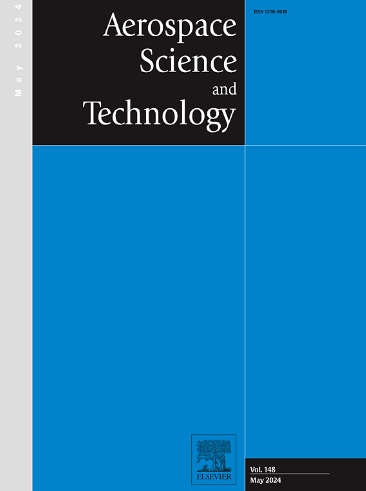Assessment of prevalent vortex-center detection criteria for the compensation of wandering motion of wingtip vortices
IF 5
1区 工程技术
Q1 ENGINEERING, AEROSPACE
引用次数: 0
Abstract
Vortex wandering, characterized as low-frequency displacements of vortex core locations, significantly affects the quantification of vortex statistics. To mitigate this impact, re-centering correction is a commonly employed method for post-processing velocity-field datasets being measured by particle image velocimetry (PIV). One of the key problems in this method is how to precisely detect instantaneous vortex centers. In this paper, eight prevalent vortex-center detection criteria are empirically evaluated, with the purpose of finding the most practical criterion for the compensation of vortex wandering. Cross-stream velocity fields in the near-wake and middle-wake regions of either an isolated vortex or a counter-rotating vortex pair, being measured by time-resolved stereoscopic PIV, are post-processed by re-centering correction with various vortex-center detection criteria, which are categorized as local or non-local methods with velocity-based or velocity-gradient-based measures. The yielded instantaneous vortex centers and vortex kinematical statistics, including mean velocity profiles and turbulent statistics, are compared in detail. It is found that the pseudo-circulation criterion, which is a velocity-based non-local method, outperforms all the other tested criteria. Once applying the pseudo-circulation criterion to decompose the instantaneous velocity field into triple components, i.e., mean component, large-scale motion and small-scale turbulent fluctuation, the pseudo-fluctuation from vortex wandering can be effectively peeled off from small-scale turbulent fluctuation, resulting in the most compact vortex profile, as well as the lowest level of small-scale turbulent kinetic energy and Reynolds shear stress in the vortex core region. Such an advance makes it an ideal vortex-center detection criterion to study either wingtip vortex instability or energy transfer characteristics associated with the vortex wandering motion.
求助全文
约1分钟内获得全文
求助全文
来源期刊

Aerospace Science and Technology
工程技术-工程:宇航
CiteScore
10.30
自引率
28.60%
发文量
654
审稿时长
54 days
期刊介绍:
Aerospace Science and Technology publishes articles of outstanding scientific quality. Each article is reviewed by two referees. The journal welcomes papers from a wide range of countries. This journal publishes original papers, review articles and short communications related to all fields of aerospace research, fundamental and applied, potential applications of which are clearly related to:
• The design and the manufacture of aircraft, helicopters, missiles, launchers and satellites
• The control of their environment
• The study of various systems they are involved in, as supports or as targets.
Authors are invited to submit papers on new advances in the following topics to aerospace applications:
• Fluid dynamics
• Energetics and propulsion
• Materials and structures
• Flight mechanics
• Navigation, guidance and control
• Acoustics
• Optics
• Electromagnetism and radar
• Signal and image processing
• Information processing
• Data fusion
• Decision aid
• Human behaviour
• Robotics and intelligent systems
• Complex system engineering.
Etc.
 求助内容:
求助内容: 应助结果提醒方式:
应助结果提醒方式:


